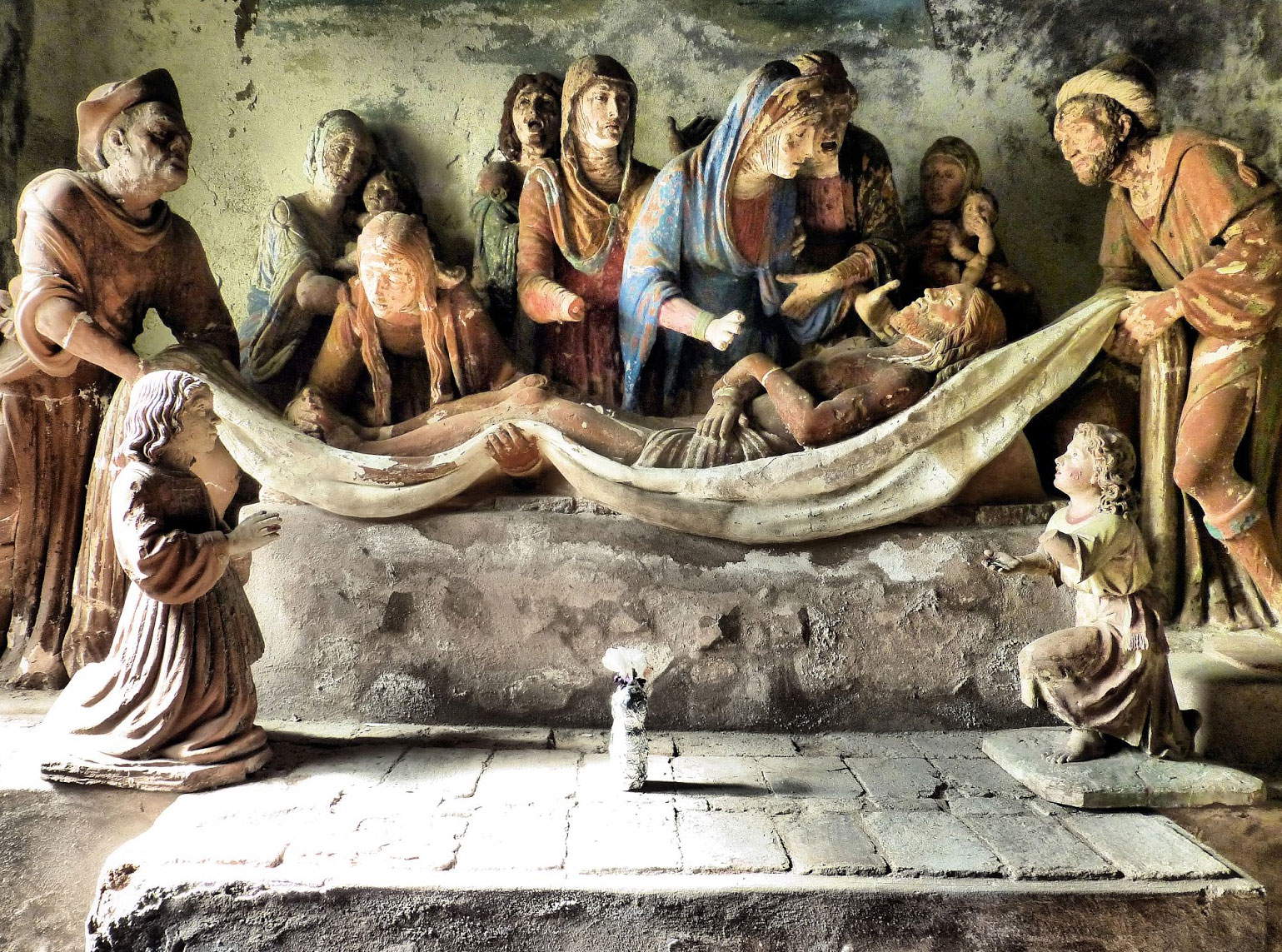One of the most important sculptural groups of the Lombard Renaissance, the Lamentation over the Dead Christ preserved in the church of Saints Peter and Blaise in Melegnano (Milan), will undergo restoration. The announcement was made by Don Mauro Colombo, provost of the pastoral community “God the Father of Forgiveness,” and the intervention will also be supported by the Ministry of Culture, which has granted between 30,000 and 40,000 euros in funding for the restoration of “I Caragnon de San Peder,” as it is known in the city this masterpiece by a Lombard artist whose identity has yet to be discovered but who is fully a part of that extraordinary theater of feelings that animated between the 15th and 16th centuries the churches of Lombardy, giving life to another Renaissance, less known but no less exciting than the one we usually study in school.
“In the fall,” he told the newspaper Il Cittadino, “the restoration of the polychrome terracotta sculptural group depicting the Lamentation of Christ, popularly known as ’I Caragnon de San Peder,’ will begin. Always present in the church of Saints Peter and Blaise, the work of art has long been in a condition of enduring degradation.” The sculptural group dates back to the early 16th century and is attributed to an artist from northern Italy close to the Leonardo school, influenced by the lessons of Bernardino Luini and Gaudenzio Ferrari. It is therefore a work that fully reflects the Renaissance artistic currents of northern Italy and is of significant historical and cultural value not only for Melegnano, but for the entire artistic heritage of Lombardy.

The restoration, the provost emphasized, will be financed by the Ministry of Culture thanks in part to the support and interest of the Superintendency of Cultural Heritage of the Metropolitan City of Milan, which pushed hard for the intervention to begin. The aim of the operation is also to eliminate solve moisture problems, the major cause of the deterioration of the sculptural group kept in the church at the end of Via Senna, in the center of Melegnano.
Indeed, the conservation of the sculptural group requires a comprehensive approach. Therefore, in addition to the direct restoration of the polychrome terracotta, a special microclimate will be designed that can maintain suitable and stable environmental conditions, so as to preserve the work over time. “We will thus bring back to life one of the main works of art in the city,” the provost added. “All this as part of a more comprehensive intervention, which we hope will lead to the restoration of the entire church of Saints Peter and Blaise.” The church that houses the sculptural group is in fact a rare example of Lombard Baroque, a religious building that, in Don Colombo’s words, can be considered “perhaps the most beautiful church in Melegnano.” The work of the “Caragnons,” in addition to its intrinsic value, thus represents a key piece in the enhancement of the entire complex.
This is not the first time that the work has benefited from restoration work. In fact, between 1993 and 2001 it had been the Lions Club of Melegnano that had taken charge of an important restoration work, which had made it possible to preserve its original structure and colors. However, the passage of time and environmental conditions made further interventions necessary, this time with a more advanced technological approach, capable of acting on the causes of degradation and not only on the visible effects.
For the community of Melegnano, the recovery of the “Caragnon” has not only artistic significance. The work, placed for centuries in the church of Saints Peter and Blaise, is an integral part of the town’s history and cultural heritage. The restoration, made possible by the intervention of the Ministry and the support of the Superintendence, is therefore an investment in the future of the city and the enhancement of its historical excellence.
 |
| Melegnano, restoration for one of the most important terracotta Compianti of the Lombard Renaissance |
Warning: the translation into English of the original Italian article was created using automatic tools. We undertake to review all articles, but we do not guarantee the total absence of inaccuracies in the translation due to the program. You can find the original by clicking on the ITA button. If you find any mistake,please contact us.